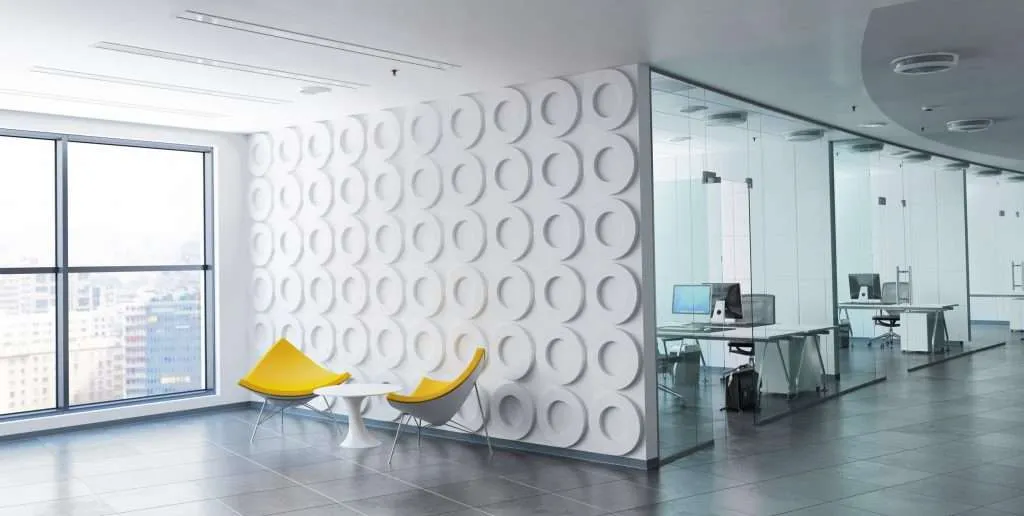When it comes to office design, many employers focus on aesthetics and functionality, often overlooking the impact of acoustics. However, the design of the workplace environment plays a crucial role in productivity and employee well-being. Office acoustic design, in particular, can significantly enhance both productivity and employee satisfaction. In this article, we will explore the importance of office acoustic design and provide insights on how to create a sound-friendly workplace. Environoise are experts in acoustic design that can help create an optimal acoustic environment in an office space and they can also help reduce echo and reverberation in the space. This can help reduce distractions and create a more enjoyable and productive workplace.
The Impact of Noise on Productivity
Noise is one of the most common complaints in the office environment. It can be distracting, disrupt communication, and decrease productivity. According to a study conducted by the Center for the Built Environment at the University of California, Berkeley, excessive noise in the workplace can reduce productivity by up to 66%. Additionally, it can lead to stress, fatigue, and even health issues such as hypertension and cardiovascular disease.
Excessive noise in the office environment is a significant problem that affects both employees and their overall well-being. The constant background noise can be incredibly distracting, making it difficult for workers to concentrate and complete tasks efficiently. This disruption in focus can lead to decreased productivity, as employees struggle to block out the noise and stay on track.
The Role of Office Acoustic Design
Office acoustic design focuses on creating a workplace environment that minimizes noise disturbances and promotes a peaceful atmosphere. It involves the strategic use of materials, furniture, and layout to control sound transmission and reverberation.
By carefully selecting materials with sound-absorbing properties, such as acoustic panels, carpets, and curtains, office acoustic design helps to reduce the level of noise that travels between different areas of the workspace. Additionally, the placement of furniture and the layout of the office can be optimized to create separate zones or barriers that further minimize sound transmission.
Another important aspect of office acoustic design is addressing reverberation, which is the prolongation of sound in a space due to reflections off hard surfaces. This can create a noisy and distracting environment. To combat this, acoustic designers may incorporate sound-absorbing ceiling tiles or wall treatments to absorb excess sound energy and reduce reverberation.

The Benefits of Office Acoustic Design
Investing in office acoustic design can bring numerous benefits to both employees and employers. Here are some of the key advantages:
- Improved productivity: Office acoustic design can help reduce noise distractions, allowing employees to focus and concentrate better on their work. This can lead to increased productivity and efficiency in completing tasks.
- Enhanced communication: Effective acoustic design can improve speech intelligibility, making it easier for employees to communicate with each other. This can result in better teamwork and collaboration, leading to more effective problem-solving and decision-making.
- Increased privacy: By incorporating soundproofing techniques, office acoustic design can provide employees with a sense of privacy. This can be particularly beneficial in open-plan offices, where individual workspaces may lack adequate sound barriers.
- Reduced stress and fatigue: Excessive noise levels in the office can cause stress and fatigue among employees, leading to decreased job satisfaction and increased absenteeism. Proper acoustic design can create a more comfortable and peaceful working environment, reducing stress levels and promoting overall well-being.
- Attracting and retaining talent: A well-designed office space that prioritizes acoustic comfort can be a major selling point for potential employees. It demonstrates a commitment to providing a conducive work environment, which can help attract and retain top talent.
- Positive brand image: A thoughtfully designed office that takes into consideration the acoustic needs of employees can contribute to a positive brand image. It shows that the company values employee well-being and invests in creating a pleasant and productive work environment.
Best Practices for Office Acoustic Design
When designing an office with acoustics in mind, it is important to consider the following best practices:
- Use sound-absorbing materials: Incorporate materials that have sound-absorbing properties, such as acoustic panels, curtains, carpets, or ceiling tiles. These materials can help reduce reverberation and echo in the office space.
- Utilize proper layout and spacing: Arrange workstations and furniture in a way that minimizes sound travel and interference. This can include placing workstations at a sufficient distance from each other and positioning meeting rooms away from high-traffic areas.
- Install sound masking systems: Sound masking systems emit a low-level background noise that helps to mask or camouflage other sounds in the office. This can create a more comfortable and private environment for employees.
- Control background noise: Implement measures to reduce or control noise from external sources, such as traffic or construction. This can include installing soundproof windows, utilizing white noise machines, or creating buffer zones between noisy areas and workspaces.
- Consider acoustic privacy: Ensure that sensitive discussions or confidential conversations are not easily overheard in open office spaces. This can be achieved by incorporating private meeting rooms or phone booths that offer better sound isolation.

Conclusion
Office acoustic design is a critical factor in creating a productive and employee-friendly workplace. By considering the impact of noise and implementing sound-friendly design solutions, employers can enhance productivity, improve communication, and promote employee well-being. Investing in office acoustic design is not only beneficial for employees but also for the overall success of the organization.






